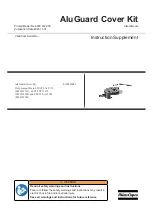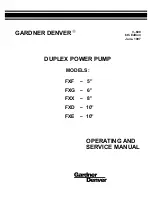
- 9 -
. Attach a socket and rotate until the relief
valve is visible.
* View from front
Relief valve
3. Adjust the relief valve with the hexagonal
head wrench.
Rotate counterclockwise to decrease the
tightening torque.
Rotate clockwise to increase the tightening
torque.
*1
CAUTION:
*1: Do not rotate the relief valve further
in the clockwise direction than its
default position. Doing so may impose
an excessive load that can damage
the tool. (The tool ships with the relief
valve rotated two turns to the left of its
maximum setting.)
• If the torque decreases, have the tool
inspected and repaired as necessary.
4. Reinsert the rubber stopper once you are
finished adjusting the valve.
CAUTION:
• Be sure to reinsert the rubber stopper.
Failure to do so may allow foreign mat-
ter inside the tool, damaging it.
Relationship between bolt
tightening time and torque
Tightening torque varies with bolt tightening
time as illustrated in the following figures.
(Figures show reference values. Actual perfor-
mance varies with tightening conditions.)
Relief valve (default position)
Tightening time (Sec.)
Tightening torque
0
0
0.5
1
1.5
2
2.5
3
5
10
15
20
25
30
N•m
M6
M8
Relief valve (minimum setting)
Tightening time (Sec.)
Tightening torque
0
0
0.5
1
1.5
2
2.5
3
5
10
15
20
25
30
N•m
M6
M8
Measurement conditions
• Temperature:
Room temperature (0°C/68°F)
Factors affecting bolt tightening
torque
Bolt tightening torque varies due to factors
described below.
1) Tightening time
Longer tightening time results in increased
tightening torque. Excessive tightening,
however, adds no value and reduces the
life of the tool.
) Bolt
• Bolt diameter: Tightening torque gener-
ally increases with bolt diameter.
• Torque coefficient (indicated by the bolt
manufacturer), grade, length, etc.
3) Battery pack charge status
• Tightening torque decreases as the bat-
tery is discharged.
(in-lbs)
(65.5)
(in-lbs)
(65.5)
(in-lbs)
(65.5)
(in-lbs)
(65.5)










































